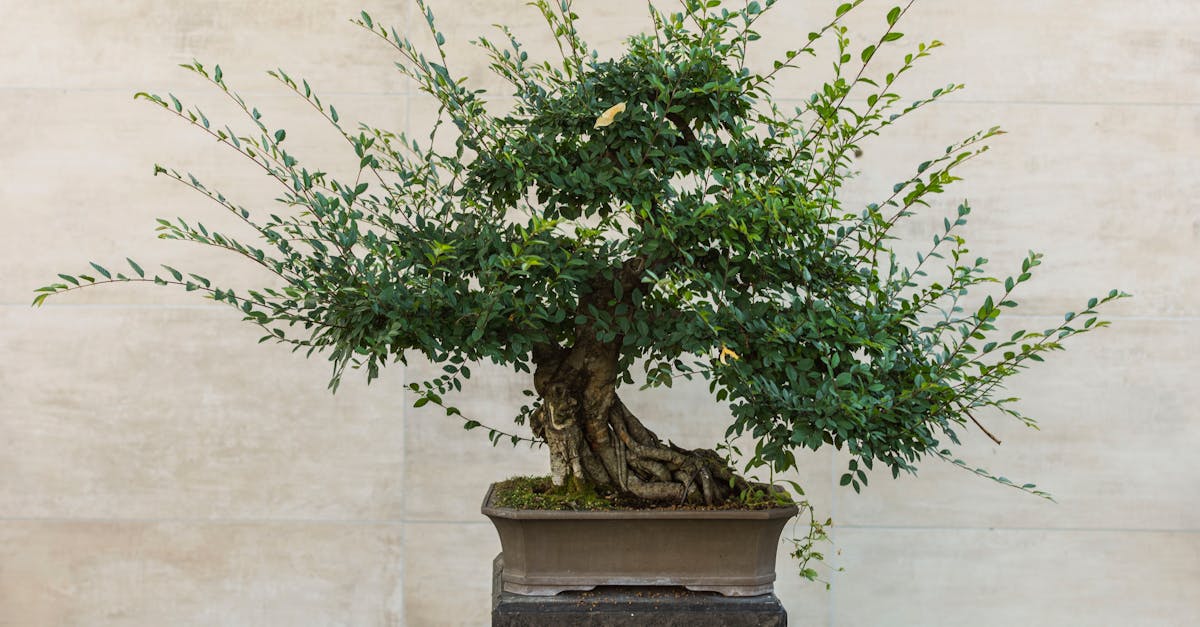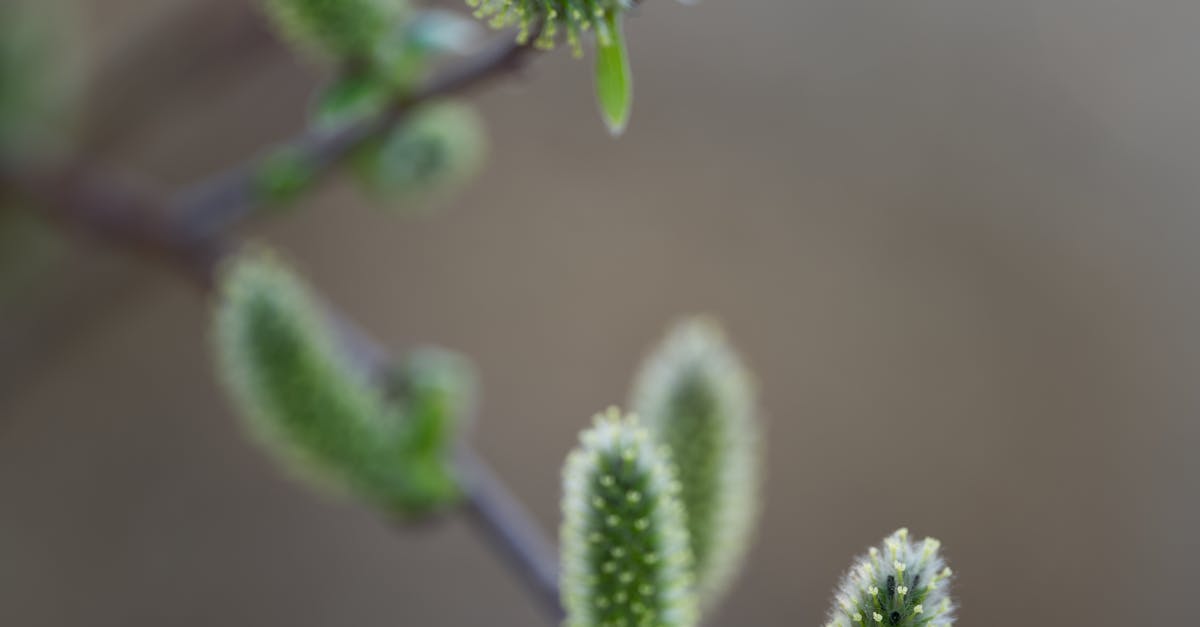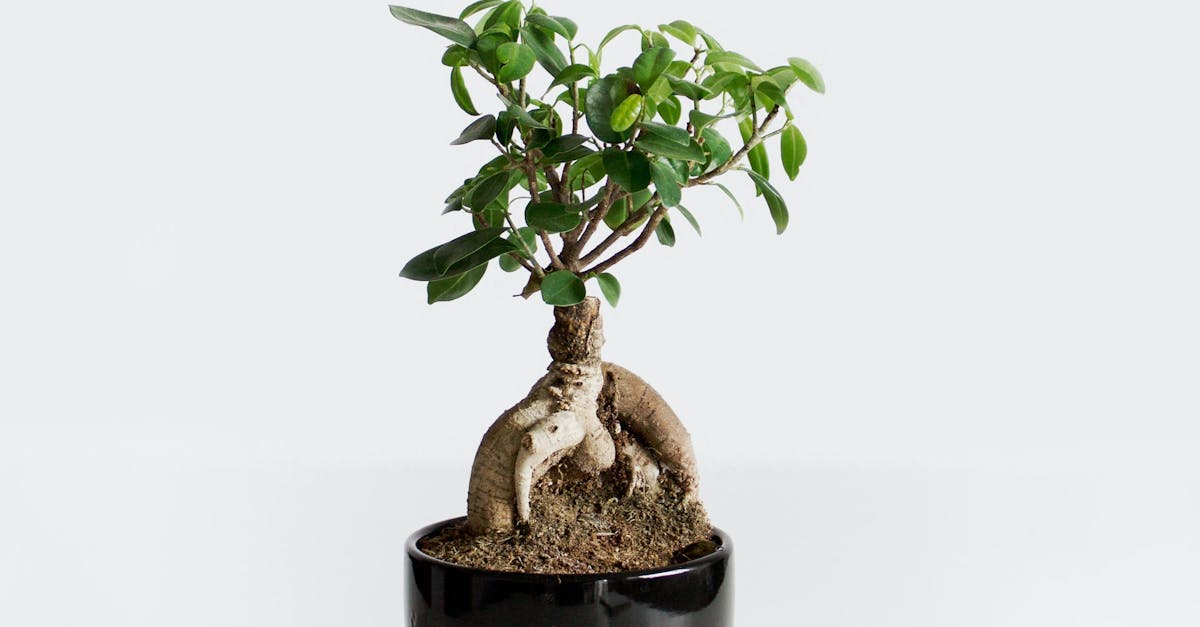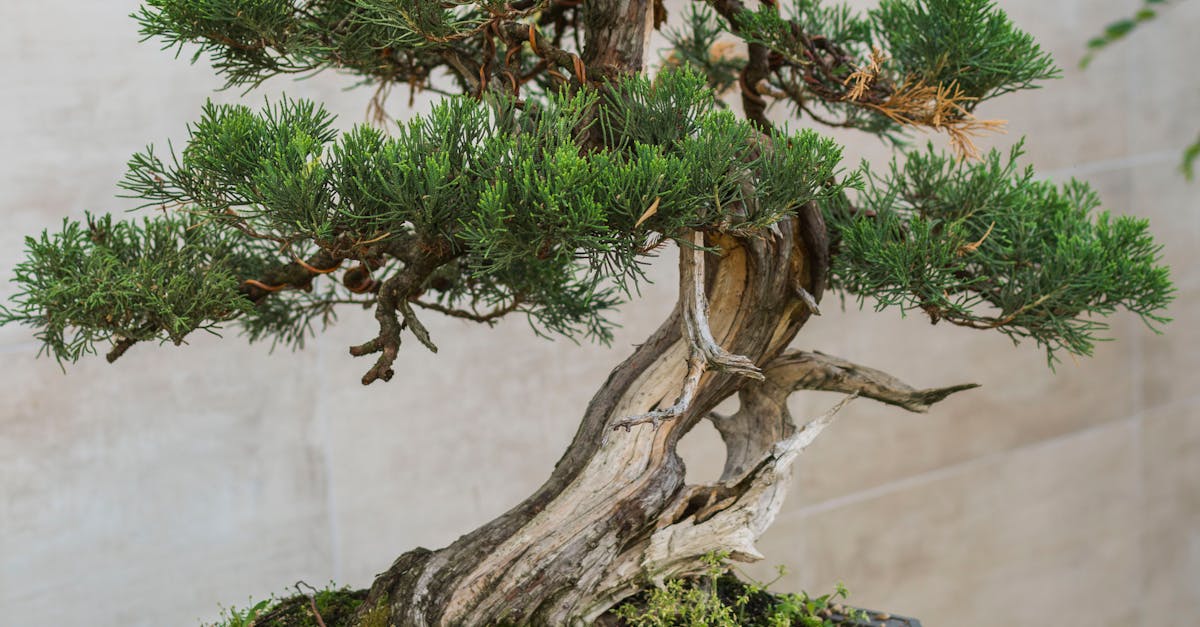Unveiling the Art of Willow Bonsai: A Guide to Growing and Shaping Miniature Masterpieces

The Allure of Willow Bonsai: A Guide to Cultivating Miniature Landscapes
Step into the enchanting realm of Willow Bonsai, an art form that transforms living trees into miniature masterpieces. Discover the unique characteristics, diverse varieties, and captivating allure of Willow trees in the realm of bonsai. Learn about their suitability for this exquisite practice, and ascertain if Willow Bonsai aligns with your preferences and lifestyle.
With meticulous care and artistic vision, Willow Bonsai enthusiasts cultivate these graceful trees, nurturing their delicate foliage, intricate branching patterns, and graceful weeping habit. Witness the harmonious balance between nature’s artistry and human creativity as Willow trees are transformed into living sculptures, evoking tranquility and wonder. Explore the journey of Willow Bonsai, from selecting the perfect specimen to shaping its destiny, ensuring optimal health and captivating aesthetics.
1. Introduction to Willow Bonsai
Introduction to Willow Bonsai: Embark on a journey into the captivating realm of Willow Bonsai. Learn about the unique characteristics, varieties, and suitability of Willow trees for the art of bonsai.
In the world of bonsai, Willow trees stand out for their graceful elegance and captivating aesthetics. Their cascading branches, delicate foliage, and intricate root systems make them a favorite among bonsai enthusiasts. As a beginner, understanding the unique characteristics and suitability of Willow trees for bonsai is essential for embarking on this artistic journey.
When selecting a Willow tree for bonsai, consider its growth habit, leaf size, and cold tolerance. Some popular Willow species suitable for bonsai include the Weeping Willow (Salix babylonica), the Golden Willow (Salix alba var. vitellina), and the Pussy Willow (Salix discolor). Each species offers distinct characteristics, adding diversity to the world of Willow bonsai.
Before committing to Willow bonsai, assess your suitability for this endeavor. Willow trees require regular watering, adequate sunlight, and proper pruning techniques to thrive. Additionally, they may be susceptible to certain pests and diseases, so diligent care is essential. With patience, dedication, and a passion for nature’s beauty, you can successfully cultivate and shape a Willow bonsai, transforming it into a living work of art.
Distinctive Features of Willow Bonsai
Distinctive Features of Willow Bonsai: Explore the enchanting qualities that set Willow Bonsai apart, including their graceful weeping habit, delicate foliage, and intricate branching patterns.
The captivating allure of Willow Bonsai lies in their unique and graceful features that distinguish them from other bonsai species. Their signature weeping habit, characterized by cascading branches that gracefully flow downwards, creates a mesmerizing visual effect, adding a touch of elegance and tranquility to any space.
Complementing their weeping habit is the delicate foliage of Willow Bonsai. The leaves, often narrow and elongated, dance gracefully in the breeze, creating a sense of movement and dynamism. The intricate branching patterns further enhance the beauty of Willow Bonsai, as the branches twist and turn in captivating ways, resembling the natural forms found in nature.
These distinctive features combine to create a harmonious balance and visual interest in Willow Bonsai. Their graceful weeping habit, delicate foliage, and intricate branching patterns make them a favorite among bonsai enthusiasts, offering a unique and captivating interpretation of nature’s beauty in miniature form.
Choosing the Right Willow Species
Choosing the Right Willow Species: Discover the diverse range of Willow species suitable for bonsai, considering their growth habits, leaf size, and cold tolerance.
Selecting the right Willow species is crucial for a successful and rewarding bonsai journey. Different Willow species exhibit unique characteristics, including growth habits, leaf size, and cold tolerance, which should be carefully considered to match your preferences and growing conditions.
For beginners, Salix babylonica, commonly known as the Weeping Willow, is a popular choice due to its graceful weeping habit and relatively easy care requirements. Salix integra ‘Hakuro Nishiki’, also known as the Flamingo Willow, is another popular option, prized for its variegated foliage that adds a touch of color to any bonsai collection. If you prefer a more compact and delicate species, Salix caprea ‘Pendula’, commonly called the Weeping Goat Willow, is an excellent choice with its smaller leaves and cascading branches.
When selecting a Willow species, consider its growth habit to ensure it complements your desired bonsai style. Leaf size is another important factor to consider, as smaller leaves create a more refined and detailed appearance, while larger leaves can add a touch of drama and grandeur to your bonsai. Additionally, the cold tolerance of the species should be taken into account, especially if you live in a region with harsh winters.
Is Willow Bonsai Right for You?
Is Willow Bonsai Right for You?: Assess your suitability for Willow Bonsai, considering its specific care requirements and the time and effort it demands.
Embarking on the journey of Willow Bonsai requires careful consideration of your suitability for this delicate art form. Willow Bonsai, while captivating and rewarding, demand specific care requirements and a significant investment of time and effort.
Before committing to Willow Bonsai, evaluate your lifestyle and schedule. Willow trees require regular watering, adequate sunlight, and proper pruning techniques to thrive. Additionally, they may be susceptible to certain pests and diseases, necessitating diligent care and attention. If you have a busy schedule or limited time to dedicate to plant care, Willow Bonsai may not be the ideal choice for you.
However, if you are passionate about nature, have patience, and are willing to invest the necessary time and effort, Willow Bonsai can be an incredibly fulfilling and rewarding experience. The process of cultivating and shaping a living tree into a miniature work of art is deeply satisfying and can bring immense joy and tranquility. Ultimately, the decision of whether Willow Bonsai is right for you depends on your individual circumstances and preferences.
2. Cultivating Your Willow Bonsai

Cultivating Your Willow Bonsai: Delve into the essential elements of Willow Bonsai cultivation, ensuring optimal growth and vitality.
Cultivating Willow Bonsai requires a deep understanding of their specific needs and preferences. By providing the ideal environment and care, you can ensure the health and vitality of your miniature Willow tree, allowing it to thrive and showcase its captivating beauty.
The journey of Willow Bonsai cultivation begins with selecting the right location. These trees prefer well-lit areas with ample sunlight and good air circulation. Protection from harsh winds and extreme temperatures is also crucial for their well-being. The choice of soil is equally important; Willow Bonsai require well-draining soil that allows for proper aeration and prevents waterlogging. A mixture of akadama, pumice, and organic matter is often recommended to provide the optimal growing conditions.
Watering and fertilizing are essential aspects of Willow Bonsai care. Water your tree regularly, especially during the growing season, allowing the soil to dry out slightly between waterings. Avoid overwatering, as this can lead to root rot. Fertilizing should be done sparingly, using a balanced fertilizer diluted to half strength. Regular pruning is also crucial for shaping and controlling the growth of your Willow Bonsai. Prune during the growing season, removing any dead or weak branches and shaping the tree according to your desired style.
Choosing the Ideal Location
Choosing the Ideal Location: Select the perfect spot for your Willow Bonsai, considering sunlight, airflow, and protection from harsh weather.
Selecting the ideal location for your Willow Bonsai is crucial for its health and vitality. These graceful trees have specific environmental preferences that should be taken into consideration to ensure their optimal growth and development.
Sunlight is essential for photosynthesis, the process by which plants convert light energy into food. Willow Bonsai require ample sunlight, at least 6 hours per day, to thrive. Place your tree in a location that receives plenty of direct sunlight, such as a south-facing window or a spot on your patio or balcony. However, avoid exposing your tree to intense midday sun, as this can scorch the leaves and damage the plant.
Good airflow is also important for Willow Bonsai. Air circulation helps prevent the buildup of moisture, which can lead to fungal diseases. Place your tree in a location with good air circulation, such as near a window or door that can be opened to allow fresh air to circulate. Additionally, avoid placing your tree in a closed-in space, as this can restrict airflow and create a humid environment that is conducive to disease.
Preparing the Soil and Potting
Preparing the Soil and Potting: Create the ideal growing environment with well-draining soil and a pot that complements the tree’s size and root system.
Preparing the soil and choosing the right pot are essential steps in creating the ideal growing environment for your Willow Bonsai. The type of soil you use and the size and shape of the pot will have a significant impact on the health and development of your tree.
The soil for Willow Bonsai should be well-draining and aerated. A mixture of akadama, pumice, and organic matter is often recommended. Akadama is a type of Japanese clay that is prized for its excellent drainage and aeration properties. Pumice is a volcanic rock that is also very porous and well-draining. Organic matter, such as peat moss or compost, helps to retain moisture and nutrients in the soil. The ideal soil pH for Willow Bonsai is between 6.0 and 7.0.
The pot you choose for your Willow Bonsai should be slightly larger than the root ball of the tree. The pot should also have drainage holes to allow excess water to escape. Glazed pots are not recommended for Willow Bonsai, as they can prevent proper drainage and aeration. Unglazed terracotta pots are a good choice, as they allow water and air to pass through the pot’s walls.
Watering and Fertilizing
Watering and Fertilizing: Learn the proper techniques for watering and fertilizing Willow Bonsai, ensuring adequate hydration and nutrient supply.
Watering and fertilizing are essential aspects of Willow Bonsai care. These two elements work together to provide your tree with the hydration and nutrients it needs to thrive. Watering your Willow Bonsai regularly will help to keep the soil moist and prevent the roots from drying out. Fertilizing your tree will provide it with the essential nutrients it needs for healthy growth and development.
The frequency with which you water your Willow Bonsai will depend on a number of factors, including the size of the tree, the type of soil it is planted in, and the climate in which you live. Generally speaking, you should water your tree when the top inch or two of soil feels dry to the touch. Water your tree deeply, allowing the water to penetrate all the way to the roots. Avoid overwatering, as this can lead to root rot.
Fertilize your Willow Bonsai every two to three weeks during the growing season. Use a balanced fertilizer that is diluted to half strength. Avoid fertilizing your tree during the winter months, as this can damage the roots.
Pruning and Wiring
Pruning and Wiring: Master the art of pruning and wiring, guiding the growth and shaping the form of your Willow Bonsai.
Pruning and wiring are two essential techniques used to shape and style Willow Bonsai. Pruning involves removing branches and leaves to control the growth of the tree and create the desired shape. Wiring is used to bend and shape the branches of the tree, allowing you to create intricate and graceful forms.
Prune your Willow Bonsai regularly to remove any dead or weak branches and to shape the tree according to your desired style. When pruning, use sharp, clean shears to make precise cuts. Avoid pruning too much at once, as this can shock the tree and damage its health. Wiring should be done carefully to avoid damaging the branches. Use soft, pliable wire and wrap it around the branches in a way that will not cut into the bark. Gradually bend the branches into the desired shape, and secure the wire with a few twists.
With patience and practice, you can use pruning and wiring to create a beautiful and unique Willow Bonsai that will be a cherished addition to your home.
3. Shaping Your Willow Bonsai
Shaping Your Willow Bonsai: Embark on the artistic journey of shaping your Willow Bonsai, transforming it into a unique and captivating miniature landscape.
Shaping your Willow Bonsai is an artistic journey that requires patience, creativity, and a deep understanding of the tree’s natural growth patterns. With careful pruning and wiring, you can guide the growth of your tree and transform it into a unique and captivating miniature landscape.
There are many different styles of Willow Bonsai, each with its own unique aesthetic. Some of the most popular styles include the upright style, the cascade style, and the literati style. The upright style is characterized by a strong, vertical trunk and branches that reach upwards. The cascade style is characterized by a trunk that slopes downwards and branches that cascade over the edge of the pot. The literati style is characterized by a tall, slender trunk and sparse branches that give the tree a sense of elegance and simplicity.
When shaping your Willow Bonsai, it is important to consider the overall balance and harmony of the tree. The tree should have a strong, sturdy base and the branches should be arranged in a way that creates a sense of movement and flow. With patience and practice, you can create a beautiful and unique Willow Bonsai that will be a cherished addition to your home.
Understanding Willow Bonsai Styles
Understanding Willow Bonsai Styles: Explore the various traditional and contemporary Willow Bonsai styles, each with its own distinct aesthetic qualities.
There are many different styles of Willow Bonsai, each with its own unique aesthetic qualities. Some of the most popular styles include:
-
Upright style: This is the most common style of Willow Bonsai. The tree has a strong, vertical trunk and branches that reach upwards. The overall shape of the tree is triangular.
-
Cascade style: This style is characterized by a trunk that slopes downwards and branches that cascade over the edge of the pot. The overall shape of the tree is often asymmetrical.
-
Literati style: This style is characterized by a tall, slender trunk and sparse branches that give the tree a sense of elegance and simplicity. The overall shape of the tree is often asymmetrical.
-
Windswept style: This style is characterized by a trunk that is bent or tilted to one side, as if it has been blown by strong winds. The branches are often arranged in a way that creates a sense of movement and flow.
-
Root-over-rock style: This style is characterized by a tree that is planted on top of a rock. The roots of the tree grow over the rock, creating a unique and interesting visual effect.
When choosing a style for your Willow Bonsai, it is important to consider the overall shape and size of the tree, as well as the desired aesthetic effect. With careful planning and execution, you can create a beautiful and unique Willow Bonsai that will be a cherished addition to your home.
Creating the Basic Form
Creating the Basic Form: Learn the fundamental techniques for establishing the primary structure and shape of your Willow Bonsai.
Creating the basic form of your Willow Bonsai is the first step in shaping and styling your tree. This process involves using pruning and wiring techniques to establish the primary structure and shape of the tree. With careful planning and execution, you can create a beautiful and unique Willow Bonsai that will be a cherished addition to your home.
To create the basic form of your Willow Bonsai, you will need to:
-
Choose a style: The first step is to choose a style for your tree. There are many different styles of Willow Bonsai, each with its own unique aesthetic qualities. Some of the most popular styles include the upright style, the cascade style, and the literati style. Once you have chosen a style, you can begin to shape your tree accordingly.
-
Prune the tree: Pruning is used to remove unwanted branches and to shape the tree. When pruning, use sharp, clean shears to make precise cuts. Avoid pruning too much at once, as this can shock the tree and damage its health.
-
Wire the tree: Wiring is used to bend and shape the branches of the tree. Use soft, pliable wire and wrap it around the branches in a way that will not cut into the bark. Gradually bend the branches into the desired shape, and secure the wire with a few twists. The first step in shaping and styling your Willow Bonsai is to establish the primary structure and shape of the tree.
Developing Refinement and Detail
Developing Refinement and Detail: Refine the form of your Willow Bonsai by employing advanced techniques such as jin, shari, and carving.
Once you have established the basic form of your Willow Bonsai, you can begin to refine the details and add character to the tree. This can be done using a variety of advanced techniques, such as jin, shari, and carving.
-
Jin: Jin is the Japanese art of creating deadwood on a bonsai tree. This can be done by removing the bark from a branch or trunk, or by carving into the wood. Jin adds a sense of age and character to the tree, and can also be used to create interesting shapes and textures.
-
Shari: Shari is the Japanese art of creating exposed roots on a bonsai tree. This can be done by removing the soil from around the roots, or by carving into the roots. Shari adds a sense of drama and interest to the tree, and can also be used to create the illusion of age.
-
Carving: Carving is a technique that can be used to create a variety of effects on a Willow Bonsai. Carving can be used to create hollows in the trunk or branches, to create realistic bark textures, or to add other details to the tree. Carving should be done carefully and with precision, as it is easy to damage the tree if done incorrectly.
By using these advanced techniques, you can refine the form of your Willow Bonsai and add character and interest to the tree. With patience and practice, you can create a beautiful and unique Willow Bonsai that will be a cherished addition to your home.
4. Maintenance and Care

Maintenance and Care: Discover the ongoing care practices essential for maintaining the health and beauty of your Willow Bonsai.
Maintaining the health and beauty of your Willow Bonsai requires ongoing care and attention. This includes regular pruning, wiring, repotting, and pest and disease control. With proper care, your Willow Bonsai can live for many years and bring you years of enjoyment.
-
Pruning: Regular pruning is essential for maintaining the shape and size of your Willow Bonsai. Pruning also helps to promote new growth and keep the tree healthy. When pruning, use sharp, clean shears to make precise cuts. Avoid pruning too much at once, as this can shock the tree and damage its health.
-
Wiring: Wiring is used to bend and shape the branches of your Willow Bonsai. Wiring should be done carefully to avoid damaging the branches. Use soft, pliable wire and wrap it around the branches in a way that will not cut into the bark. Gradually bend the branches into the desired shape, and secure the wire with a few twists.
-
Repotting: Repotting is necessary every few years to refresh the soil and to provide the tree with more room to grow. When repotting, use a well-draining soil mix and a pot that is slightly larger than the root ball of the tree. Repotting should be done in the spring or fall, when the tree is dormant.
-
Pest and disease control: Willow Bonsai are susceptible to a variety of pests and diseases. It is important to inspect your tree regularly for signs of pests or diseases, and to treat them promptly. Common pests include aphids, scale, and mealybugs. Common diseases include powdery mildew, leaf spot, and root rot.
Regular Pruning and Wiring
Regular Pruning and Wiring: Continuously refine the shape and encourage new growth by implementing regular pruning and wiring techniques.
Regular pruning and wiring are essential for maintaining the health and beauty of your Willow Bonsai. Pruning helps to control the growth of the tree and to shape it according to your desired style. Wiring is used to bend and shape the branches of the tree, allowing you to create intricate and graceful forms.
Pruning should be done regularly throughout the growing season. When pruning, use sharp, clean shears to make precise cuts. Avoid pruning too much at once, as this can shock the tree and damage its health. Wiring should also be done regularly, as the branches of the tree will naturally grow and change shape over time. When wiring, use soft, pliable wire and wrap it around the branches in a way that will not cut into the bark. Gradually bend the branches into the desired shape, and secure the wire with a few twists.
By regularly pruning and wiring your Willow Bonsai, you can keep it healthy and beautiful for many years to come. With patience and practice, you can create a stunning bonsai that will be a cherished addition to your home.
Repotting and Root Care
Repotting and Root Care: Ensure optimal root health and continued growth by repotting your Willow Bonsai as needed.
Repotting is an essential part of Willow Bonsai care. Repotting provides the tree with fresh soil and nutrients, and it also allows you to check the health of the roots. Repotting should be done every few years, or more often if the tree is growing rapidly. The best time to repot is in the spring or fall, when the tree is dormant.
When repotting your Willow Bonsai, use a well-draining soil mix and a pot that is slightly larger than the root ball of the tree. To repot the tree, carefully remove it from its old pot and gently loosen the roots. Remove any dead or damaged roots, and then place the tree in the new pot. Fill the pot with soil and gently tamp it down around the roots. Water the tree thoroughly after repotting.
In addition to repotting, you should also regularly check the roots of your Willow Bonsai for signs of disease or damage. If you notice any problems, you should treat them promptly. With proper care, the roots of your Willow Bonsai will remain healthy and strong, and the tree will continue to grow and thrive.
Pest and Disease Management
Pest and Disease Management: Protect your Willow Bonsai from common pests and diseases, safeguarding its vitality and aesthetics.
Willow Bonsai are susceptible to a variety of pests and diseases, just like any other plant. However, by taking proper care of your tree and inspecting it regularly, you can help to prevent and treat these problems. Some of the most common pests that affect Willow Bonsai include aphids, scale, and mealybugs. These pests can suck the sap from the leaves and branches of the tree, causing the leaves to turn yellow and drop off. Other pests, such as caterpillars and spider mites, can also damage the leaves and branches of the tree.
In addition to pests, Willow Bonsai are also susceptible to a variety of diseases, including powdery mildew, leaf spot, and root rot. These diseases can cause the leaves to turn yellow and drop off, and they can also damage the roots and trunk of the tree. In severe cases, diseases can even kill the tree.
To prevent and treat pests and diseases, it is important to inspect your Willow Bonsai regularly. Look for signs of pests, such as insects or their eggs, and look for signs of diseases, such as yellowing leaves or spots on the leaves. If you find any pests or diseases, you should treat them promptly. There are a variety of insecticides and fungicides available that can be used to treat pests and diseases on Willow Bonsai.
5. Conclusion: The Art of Willow Bonsai
Conclusion: The Art of Willow Bonsai: Reflect on the captivating journey of Willow Bonsai, celebrating the artistry and dedication that transforms living trees into miniature masterpieces.
The art of Willow Bonsai is a captivating journey that requires patience, dedication, and a deep appreciation for the beauty of nature. By understanding the unique characteristics, care requirements, and shaping techniques of Willow trees, you can transform them into miniature masterpieces that will bring years of enjoyment.
As you embark on this journey, remember that Willow Bonsai is an art form that is constantly evolving. There is always something new to learn and new ways to improve your skills. Embrace the learning process and enjoy the journey of creating beautiful and unique Willow Bonsai.
The Rewards of Willow Bonsai
The Rewards of Willow Bonsai: Discover the immense satisfaction and fulfillment that comes with cultivating and shaping Willow Bonsai.
Cultivating and shaping Willow Bonsai is a rewarding and fulfilling hobby that can bring immense satisfaction. As you care for your tree and watch it grow and develop, you will develop a deep connection with nature and a sense of accomplishment. The process of shaping and styling your Willow Bonsai is an art form that allows you to express your creativity and create a unique and beautiful work of art.
In addition to the satisfaction that comes from caring for and shaping your Willow Bonsai, there are also a number of other benefits to this hobby. Willow Bonsai can help to reduce stress and promote relaxation. The act of caring for your tree can be a meditative experience, and the beauty of your bonsai can bring a sense of peace and tranquility to your home. Willow Bonsai can also be a great way to connect with other people who share your interest in this art form.
Sharing the Beauty of Willow Bonsai
Sharing the Beauty of Willow Bonsai: Explore opportunities to showcase your Willow Bonsai creations and connect with fellow enthusiasts.
Once you have created a beautiful Willow Bonsai, you may want to share its beauty with others. There are a number of opportunities to showcase your Willow Bonsai creations and connect with fellow enthusiasts. One way to share your Willow Bonsai is to enter it in a bonsai show. Bonsai shows are held all over the world, and they provide a great opportunity to展示 your tree and learn from other bonsai enthusiasts. Another way to share your Willow Bonsai is to create a blog or website about your hobby. You can use your blog or website to share photos of your trees, document your progress, and connect with other bonsai enthusiasts.
In addition to bonsai shows and blogs, there are also a number of online forums and communities where you can share your Willow Bonsai creations and connect with other enthusiasts. These forums and communities are a great way to learn more about Willow Bonsai, get advice from other enthusiasts, and share your own experiences.
Continuing Your Bonsai Journey
Continuing Your Bonsai Journey: Seek inspiration and knowledge from experienced bonsai artists and engage in ongoing learning to further refine your craft.
As you continue your bonsai journey, it is important to seek inspiration and knowledge from experienced bonsai artists and engage in ongoing learning to further refine your craft. There are a number of ways to do this. One way is to attend bonsai workshops and demonstrations. Bonsai workshops and demonstrations are a great way to learn from experienced bonsai artists and to see different techniques in action. Another way to learn more about bonsai is to read books and articles about the subject. There are a number of excellent books and articles available that can help you to learn more about the art of bonsai.
In addition to attending workshops and reading books, you can also learn more about bonsai by joining a bonsai club or society. Bonsai clubs and societies are a great way to connect with other bonsai enthusiasts and to learn from each other. Many bonsai clubs and societies also offer workshops and demonstrations, which can be a great way to learn more about the art of bonsai.
Is Willow Bonsai a good choice for beginners?
Yes, Willow Bonsai can be a good choice for beginners. They are relatively easy to care for and can tolerate a wide range of conditions.
What is the best way to water Willow Bonsai?
Water your Willow Bonsai when the soil feels dry to the touch. Water deeply, allowing the water to penetrate all the way to the roots.
How often should I fertilize my Willow Bonsai?
Fertilize your Willow Bonsai every two to three weeks during the growing season. Use a balanced fertilizer that is diluted to half strength.
How do I shape my Willow Bonsai?
You can shape your Willow Bonsai using pruning and wiring techniques. Prune to remove unwanted branches and to shape the tree. Wire the branches to bend and shape them into the desired form.
What are some common pests and diseases that affect Willow Bonsai?
Some common pests that affect Willow Bonsai include aphids, scale, and mealybugs. Some common diseases that affect Willow Bonsai include powdery mildew, leaf spot, and root rot.




